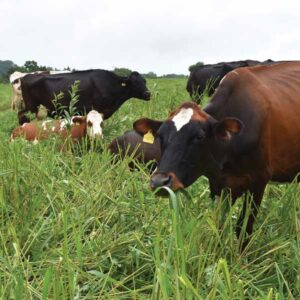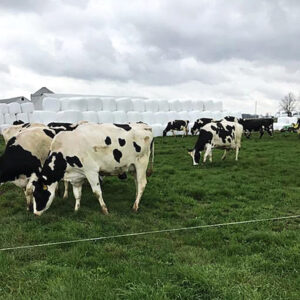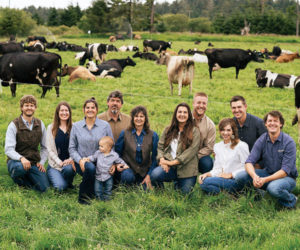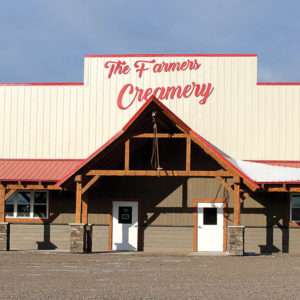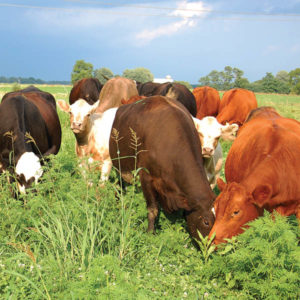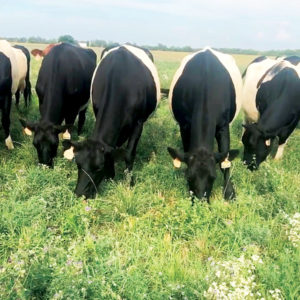Five cuttings, TMR, frequent paddock shifts work for Barkmans
By Martha Hoffman Kerestes
Fresno, Ohio — While it might seem surprising coming from a forage-only dairy farmer, Ervin Barkman finds winter the ideal time to make milk. Winter production peaks at 52 lbs./cow thanks to top-quality baleage, grassfed-adapted genetics, and lush fall grass when many fresh cows are getting started.
After a decade without the grain scoop and seven years of getting a premium for it on the CROPP/Organic Valley Grassmilk route, Ervin wouldn’t go back to feeding grain. Improved cow health and longevity along with better financials make grass-only dairy an easy choice for his situation.
Butterfat for the predominantly Fleckvieh herd runs around 4.2% (but has been up to 4.8%) and protein 3.2%. Total milk shipped comes to about 12,800 lbs./cow in about 295 days in milk.
The key to these numbers is excellent grazed and stored forage.
“It’s all about forage,” Ervin explains. “Dry matter intake is very important. If you have good forage and you keep it in front of the cows, there’s no reason you won’t have good dry matter intake. And the more dry matter intake you have, the more milk you’re getting.”
Continue reading “Making milk without the grain scoop”
